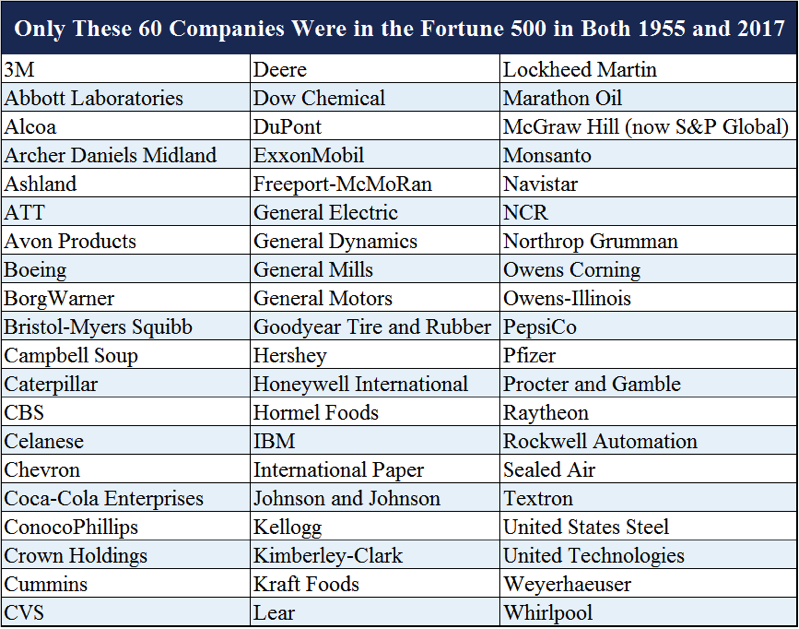This is economic Darwinism. And it’s good for America. Of course, the corporate welfare state loves “to big to fail” bailouts, subsidies, and transfer of wealth that keeps them on top of the pile. Fascism at its best.

What do the companies in these three groups have in common?
Group A: American Motors, Brown Shoe, Studebaker, Collins Radio, Detroit Steel, Zenith Electronics and National Sugar Refining.
Group B: Boeing, Campbell Soup, Deere, General Motors, IBM, Kellogg, Procter and Gamble, and Whirlpool.
Group C:Amazon, Facebook, eBay, Home Depot, Microsoft, Google, Netflix, Office Depot and Target.
All of the companies inGroup Awere in the Fortune 500 in 1955, but not in 2017.
All of the companies inGroup Bwere in the Fortune 500 in both 1955 and 2017.
All of the companies inGroup Cwere in the Fortune 500 in 2017, but not 1957.
The list ofFortune 500companies in 1955 is availablehereand for 2017here(based on sales for the fiscal year ended on or before Jan. 31, 2017). Comparing the 1955Fortune 500companies to the 2017Fortune 500, there areonly 60 companies that appear in both lists (see companies in the graphic above). In other words, only 12% (and fewer than 1 in 8) of theFortune 500companies in 1955 were still on the list 62 years later in 2017, and more than 88% of the companies from 1955 have either gone bankrupt, merged with (or were acquired by) another firm, or they still exist but have fallen from the topFortune 500 companies (ranked by total revenues). Many of the companies on the list in 1955 are unrecognizable, forgotten companies today (e.g., Armstrong Rubber, Cone Mills, Hines Lumber, Pacific Vegetable Oil, and Riegel Textile).